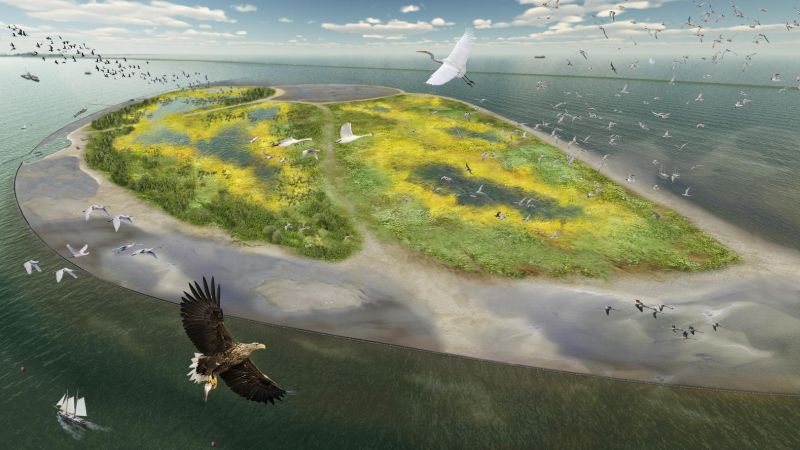Petra Dankers1
Royal Haskoning DHV, This email address is being protected from spambots. You need JavaScript enabled to view it.
It all started in 1975 with the closure of the Houtribdijk. Once meant to become a polder, the need of fertile land decreased and Lake Marken became an established fact. The muddy soils of the lake, in combination with the shallow depth, were a perfect combination to create a mud pool with low ecological value. At least, that was the general opinion. Research on the real reason of the high turbidity in the lake had yet to start.
Already in the late nineties, people started dreaming of ecological improvement of the Lake system. At that time, the first ideas about creating a large ‘Oermoeras’ came to play. A large wetland that would provide space for many birds and fish and at the same time would help in reducing the turbidity in the lake.
In 2010, an extensive 6-year long research program started. Focus of this research program was on understanding the Lake Marken biotic and abiotic system, finding the cause of the high turbidity in the lake and experiment, in the field, with measures to improve the resilience and sustainability of the ecosystem. One of these measures was creating a ‘mini’ Oermoeras. Now known under the name Ierst (old Dutch for ‘the first’). Ierst can still be seen when travelling along the Houtribdijk.
6 Year is a long time, especially for policy makers. They had no time to wait for scientists to come up with an answer on causes of turbidity and possible solutions. They needed action and measures. The idea of creating Markerwadden fitted perfectly in the wishes and expectations of policy makers. We all know how this ended, Markerwadden is a fact and in the future possibly functions as the long desired large Oermoeras. It does improve the ecosystem and is a haven for birds because of its quietness and the many gradual land-water boundaries it provides in a lake with so many hard boundaries. Whether the Markerwadden also decreases the turbidity in the lake, remains to be seen.











